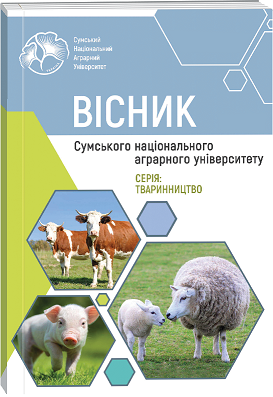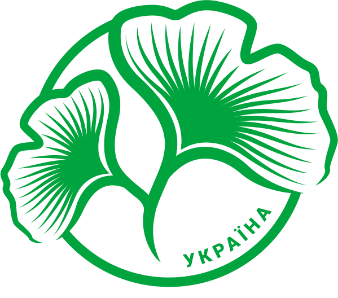INFLUENCE OF PRE-INCUBATION STORAGE CONDITIONS AND CALIBRATION OF EGGS ON DIFFERENTIAL MORTALITY OF EMBRYOS OF DIFFERENT SEX
Abstract
The article highlights the importance of autosex poultry as a model object for scientific research due to its unique genetic and physiological characteristics. In particular, the issues of differential sex mortality are analyzed, which is an important aspect of studying the patterns of development of organisms. Poultry, especially chickens, are widely used as a model for analyzing the influence of external factors on ontogenesis. This applies to aspects such as sex ratio and embryo viability, which are key for fundamental biology and practical application in poultry farming. The study analyzed the sex ratio and mortality of chicken embryos under different conditions of pre-incubation storage and incubation of eggs. For this purpose, anatomical, Japanese, color-sex and federsex methods of sex determination were used, which ensured high accuracy of the results obtained. The studies covered a wide range of chicken breeds and hybrids, which made it possible to draw conclusions about the specifics of differential sex mortality in different genetic groups. The study analyzed the sex ratio of chicks depending on egg storage conditions, incubation regime and weight calibration. Under optimal incubation conditions, a secondary sex ratio close to 1:1 was confirmed. In seven batches of day-old chicks, the proportion of females was 49.71–53.49%, with an average value of 51.26%. Long-term storage of eggs (8–15 days) caused an increase in embryonic mortality (up to 28.1%) and the predominant death of male embryos, which led to a significant shift in the sex ratio in favor of females (61.7%). In contrast, short-term storage (1–7 days) did not affect the incubation indicators and ensured the expected equality of the sexes. The study of egg weight revealed that medium-weight eggs (group M0) provide the highest survival of embryos with an equal sex ratio. In small eggs (M-), the predominant death of male embryos was observed, while in large (M+) females died more often. Of the day-old chicks obtained from M- eggs, the proportion of females was 53.74–54.60%, and from M+ eggs, the proportion of males increased to 53.86–55.49%. Increased survival of embryos in the modal class of eggs (M0) is associated with their higher biochemical heterogeneity of protein proteins, which confirms the theory of genetic homeostasis. It was found that males are more sensitive to stress factors, which confirms the differential mortality of the sexes. The results obtained are consistent with the theory of bisexual evolution of V. A. Geodakyan. According to this concept, differential mortality of the sexes is an adaptive mechanism that allows the population to better adapt to stressful conditions. The study confirmed that under stress conditions caused by changes in egg storage or incubation conditions, male embryos die more often than female ones. This phenomenon was observed both in the embryonic and postnatal periods of development. Thus, the results of the work not only confirm the adaptive nature of differential mortality of the sexes, but also open new prospects for further study of the genetic and biochemical mechanisms that determine the development of embryos in different conditions. They are of great importance for optimizing breeding, incubation and reproductive management technologies in poultry farming.
References
2. Chue, J. & Smith, C. A. (2011). Sex determination and sexual differentiation in the avian model. The FEBS journal. Vol. 278(7). pp. 1027–1034. https://doi10.1111/j.1742-4658.2011.08032.x .
3. Epimakhova, Elena E. & et al. (2024). Chicken Skin of the Dominant CZ Cross System. In: International Conference on Innovations in Sustainable Agricultural Systems. Cham: Springer Nature Switzerland. pp. 355–363. https://doi10.1007/978-3- 031-70673-8_38 .
4. Geodakyan, V. A. (1989). The theory of gender differentiation of people. Lyudina in the system of sciences. M. Science. pp. 171–189.
5. Kulibaba, R. O. & Podstrieshnyi, O. P. (2012). Vyznachennia stati ptytsi z nevyrazhenym statevym dymorfizmom z vykorystanniam polimeraznoi lantsiuhovoi reaktsii [Determining the sex of a bird with pronounced sexual dimorphism using polymerase chain reaction]. Suchasne ptakhivnytstvo, Vol. 5. S. 18–22. [in Ukrainian]
6. Haque, M. A., Pearson, J. T., Hou, P. L., & Tazawa, H. (1996). Effects of pre-incubation egg storage on embryonic functions and growth. Respiration physiology. Vol. 103(1). S. 89–-98.
7. Hirst, C. E., Major, A. T. & Smith, C. A. (2018). Sex determination and gonadal sex differentiation in the chicken model. International Journal of Developmental Biology. Vol. 62(1-2-3). S. 153–166. https://doi10.1387/ijdb.170319cs
8. Khvostyk V. & Bondarenko Yu. (2021). Selektsiino-henetychni pidkhody do vyvedennia novykh henotypiv dymorfnykh husei [Breeding and genetic approaches to breeding new genotypes of dimorphic geese]. Bulletin of Sumy National Agrarian University. The series: Livestock. Vol. 2 (45). S. 47–53. https://doi.org/10.32845/bsnau.lvst.2021.2.7 .[in Ukrainian]
9. Khvostyk, V. & O. Smetana. (2012). Vykorystannia matematychnykh modelei dlia opysu zhyvoi masy kurei [Using mathematical models to describe chicken live weight]. Tvarynnytstvo Ukrainy. Vol. 9. S. 6–11. https://doi 10.32636/01308521.2022-(72)-1-11. [in Ukrainian]
10. Kry`shtoforova, B. V. & Stegnej, Zh. G. (2013). Morfologichni osobly`vosti okremy`x kistkovy`x organiv kurchat [Morphological features of separate brush organs of chickens]. Scientific journal of the Lviv National University of Veterinary Medicine and Biotechnology named after Gzhyczko. Naukovy`j visny`k L`vivs`kogo nacional`nogo universy`tetu vetery`narnoyi medy`cy`ny` ta biotexnologij im. G`zhy`cz`kogo. Vol. 15 (1). S. 331–336. [in Ukrainian]
11. Livshits, G. & Kobyliansky, E. (1985). Lerner’s concept of developmental homeostasis and the problem of heterozygosity level in natural populations. Heredity. Vol. 55(3). S. 341–353.
12. Meijerhof, R. (1992). Pre-incubation holding of hatching eggs. World`s Poultry Science Journal. Vol. 48(1). S. 57–68.
13. Movchayiyi, O. V. (2000). Vyvchennia dynamiky zhyvoi masy kurchat metodom tryfaktornogo statystychnogo analizu [Study of the dynamics of live weight of chickens using the method of three-factor statistical analysis]. Rozvedennya i genety`ka tvary`n., Vol. (33). S. 78–83. [in Ukrainian]
14. Jilly Bertalan. (2018). Development opportunities and profitability of private utility pigeon breeding in Hungary. Agricultural. S. 20.
15. Roiter Ykov & Degtyareva Olga. (2023). Evaluation of guinea fowls by genetic markers of plumage color. In: BIO Web of Conferences. EDP Sciences. Vol. 71 S. 1068. https://doi.org/10.1051/bioconf/20237101068 .
16. Shimada, K. (2002). Sex determination and sex differentiation. Avian and Poultry Biology Reviews. Vol. 13(1). S. 1–14.
17. Shomina, N. V. (2019). Vplyv terminu zberigannya yayecz kurei na embrionalnyi rozvytok ptyci, vyvid ta yakist molodnyaku [The influence of the term of storage of chicken eggs on the embryonic development of the bird, the appearance and quality of the young]. Ptaxivny`cztvo. Ukrayina. Vol. (10). S. 28–31. [in Ukrainian]
18. Smith, C. A. & Sinclair, A. H. (2004). Sex determination: insights from the chicken. Bioessays. Vol. 26(2). S. 120–132.
19. Tkachyk, T. E. (2007). Spadkova konsolidatsiia batkivskykh form ta autoseksnykh henotypiv birkivskykh miasoyaiechnykh kurei [Hereditary consolidation of parental forms and autosex genotypes of Birkiv meat-and-egg chickens]. Visnyk Kharkivskoho natsionalnoho universytetu imeni VN Karazina. Seriia: Biolohiia., Vol. 6. S. 66–72. [in Ukrainian]

 ISSN
ISSN  ISSN
ISSN 



